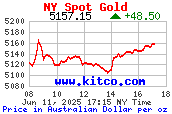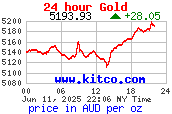Gold’s role in short and long term protection for lower-middle income individuals / families

In April 2020, GoldNews.com.au came under new management, articles published before this time, such as the below, may not reflect the views or opinions of the current GoldNews.com.au team.
Gold and wealth is often viewed hand in hand, with gold no longer being a modern measure of wealth alone, many people still believe that buying gold is only an activity for the rich, the reality is nothing could be farther from the truth.
A large majority of gold is produced in one ounce bars (1 troy ounce = 31.1 grams), this amount is not because of demand from rich investors, but rather is to supply gold at low premium (premium means the lowest possible price over the current world gold price) to everyday buyers. These small amounts mean that individuals who are able to accumulate $1500 AUD (Australian dollar) or so (the amount an ounce of gold has been recently, and is likely to return to) can go out and purchase either a 1 ounce gold bar, or 1 ounce gold coin, to add to their collection.
Coin and bullion collection is not the habit of collectors only, in fact, the majority of gold purchased in one ounce lots is often by lower middle class income earners, who look to hold some of their wealth in gold for the long term. Gold is attractive because it is simple in its economics, the world gold price is active for 6 days a week globally, and local markets operate monday to friday. There is only two central prices, a bid price (the amount for which a broker is willing to pay for your 1 ounce of gold) and an ask price (the price at which a broker or the market in general is willing to sell an ounce of gold to you). A single quoted gold price from a gold bullion broker often indicates the price between these two, as being the actual gold value price at any one time.
Understanding these 3 basic prices is enough to enter into and manage the market, and your potential profit or loss at any one time for the gold you acquire. Keeping track of gold is a simple process, you just need to purchase at times when gold is cheap (at present this is around $1450 AUD to $1550 AUD) and sell when gold rallies to a higher amount (at present the top expected near future price is around $1750 AUD).
Another good thing about gold, is that it is always quoted globally to the marketplace in US dollar currency form, meaning that when the Australian dollar devalues against the US dollar (USD), we always see the AUD value of the metal rise to the exact amount that the Australian dollar has lost. Hence during times of high Australian Dollar value against the US dollar, it is often highly profitable to purchase gold. Historically the AUD has always found a stability level at around 55c to 65c USD, when the AUD is of higher value than this, and the gold value in USD has been stable for some time, is indicative of a great opportunity to purchase gold.
Keeping your receipts and invoices helps you keep track of how much you have paid for gold in total, as the price varies each day you purchase, you will rarely pay the exact same amount for gold from one day to the next. Keep track of your total position (the total value of your gold on hand) and the average combined position (the total gold value divided by the ounces of gold you hold), and if your average becomes much lower than the current gold price on offer (say you stand to make around $200 off selling a single ounce at any one time), you can offload small amounts to gain a short term profit, then re-purchase that amount if the gold price falls.
This keeps a short term gain and also sets you up for a long term position, never sell all your gold in one go, it is advisable to acquire around 10 ounces before you even consider selling any gold.
The gold price is also known to stagnate for upto a month or two at a time, this is often when the market demand is low and future economic problems within the general economy (stocks and share prices of regular companies and levels of federal government debt, along with federal currency inflation increases) are unlikely and not yet foreseen. During these times is often a good time to buy, and the price recently where this stagnation has occurred for some time is the $1450 AUD mark.
Recently there has also been a constant move between the 1450 AUD mark and the $1700 AUD mark, with prices rising often to around $1700, then falling back to 1450. This has helped investors who target both short term profits and long term positions, as they have been able to sell at around the $1650 – $1700 mark, and re-acquire those ounces of gold at the $1450 – $1550 mark. This is often unofficially termed as ‘playing the market’, as you are taking advantage of selling around 10% of your total gold on hand for a short term profit, then re-acquiring it for less at a later time.
By ‘playing the market’ with 10% of your total gold outlay, you still have the other 90% on hand if the gold price continues to rally (gain in value), hence you have made some money on your initial position, but are still well placed that if gold finds a new long term position of around $1700 AUD and you are forced to pay this price a year later, your outlay cost difference is not highly affected and at most times you will break even with the original price, maybe $100 or so behind or in front.
So in this position, what purpose does the other 90% serve, the amount that is not going to be used for short term gains, where do the benefits of holding this come in? The answer to this, is 3 simple letters, G. F. C.
Global financial crisis if you haven’t already guessed, these events are known to occur once or twice a decade in varying extremes, the 2007/2008 GFC was very serious, and big gains were seen in the gold price, while currency inflation gained rapidly (resulting in a decrease in the value of the $50 note in your wallet or bank account) and stocks crumbled from their original value. During a global financial crisis, metals are far more secure than currency and stocks, as to counter a GFC, governments either need to inflate the currency by stimulating investment in companies that have lost value, or they have to opt for a recession (a lowering of the total money supply, where by a percentage of the countries debt is recovered and the amount of available money is lowered, causing its value to rise as more is repaid to banks).
Global financial crisis means that the global economic model is in a state of recovery and prices are going to be unstable for some time. At these times, gold often holds the most value and regularly gains highly in value regardless of recession or inflation. At these times when you hear of inflation rising by say 3% to 5%, this means that every year the $50 note in your wallet is devaluing by this amount (at the absolute minimum, most times inflation from private loans pushes this amount even further). At the same time, during a recession money is not easy to come by, many people are often laid off work or have their employment terminated, there is no growth within the economy of the country or countries affected by a recession, and growth is unlikely until enough debt is recovered to satisfy central banks that the economic situation going forward is safe enough to begin loaning money to people once more. During a recession money is difficult to come by, as money is difficult to find, and selling gold during this time can provide you with financial security going forward, should you be affected by the employment situations that often occur during a recession.
During Australia’s last recession, gold actually gained in value dramatically, almost doubling by the time the country came back into growth, hence those who held gold during this time made a substantial gain, and another benefit of a recession is that often people will default on property loans, meaning property purchase prices become lower, so you can sell your gold and acquire property much cheaper than you would have during an inflation period or a period of stability.
All this is the key behind why individuals own gold, and why gold is not only for people who are well off financially, but can greatly assist those who are of lower-middle class incomes to secure their limited wealth during periods where often they are the most affected by global financial crisis.

















Leave a Reply